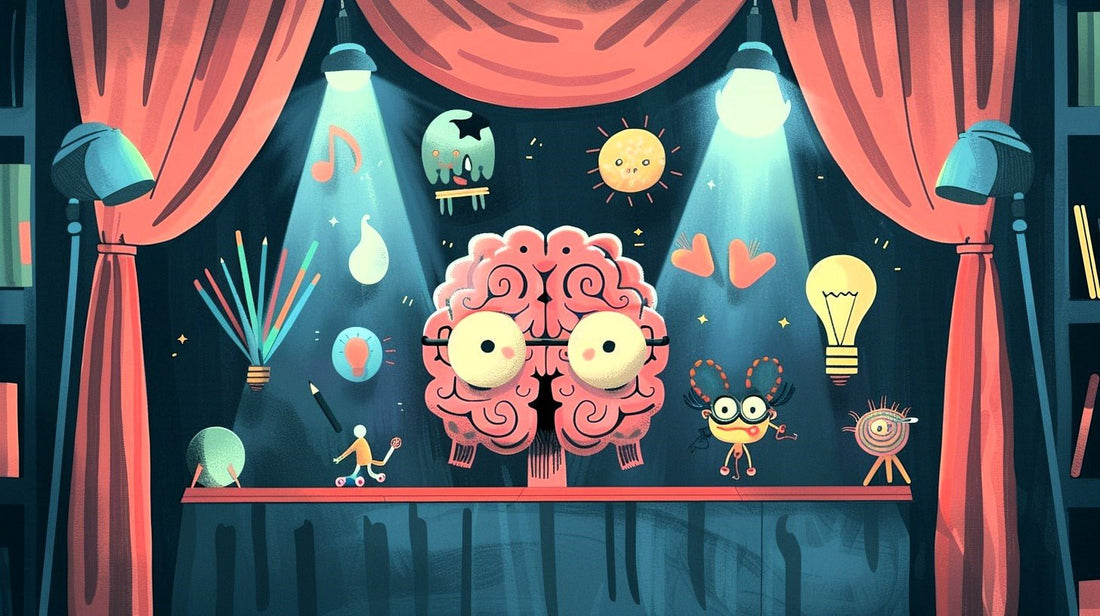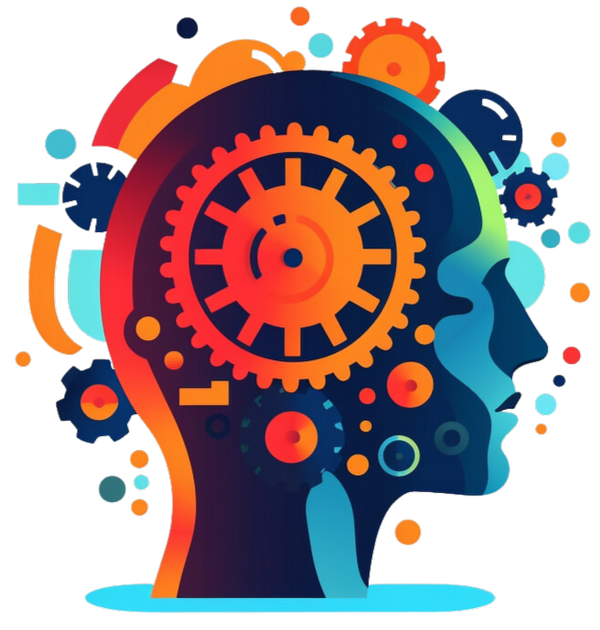
The basic needs of the ADHD brain
Share
Constantly active, always thinking, doing, constantly reacting, starting many projects and switching between them, constantly chasing new ideas and gathering information—or initiating new projects. Never satisfied with less, with slower or easier.
Does that sound familiar?
Why do you constantly expose yourself to this stress?
Why do you keep doing this? You know it makes you uncomfortable, that it might prevent you from achieving your goals, create disorder, and keep you from succeeding.
This is not a criticism, but a sincere question: Do you understand why you keep behaving this way , even though you actually know "better" and want less stress?
I can give you the answer, but more on that later.
First of all, you're neither a failure nor lacking self-discipline. The problem can't be solved by "trying harder" or "pulling yourself together more." Such accusations and attempts to find more peace and achieve goals are common among people with ADHD. And they hurt them accordingly.
But that's not how it works.
It's not about "more effort".
It's about understanding yourself. Only then can you find solutions that truly work – even in the long term.

What your brain is trying to tell you
Changing one's own behavior is one of the most difficult challenges. It's not enough to simply resolve to do something differently.
You've probably experienced this: You resolve to do one thing at a time – and maybe it works for an hour. Then an email arrives or a sock lands on the floor, and – whoosh –... you know what I mean. Off track, back into stress mode.
One could view this negatively: typical ADHD distractibility and impulsivity. A deficit.
But there is another perspective.
Let’s listen to what your brain wants to tell you:
...I NEED STIMULATION!!!...
A legitimate need instead of a deficit.
But what does “I need stimulation” mean?
Without delving too deeply into neurobiology, it's important to know the following: If the ADHD brain lacks stimulation, it simply shuts down—or goes into standby mode. It's like a screen saver that activates when no input is received. On a PC, this takes 30 minutes or more, depending on the settings; on an ADHD brain, the screen saver can activate after about 30 seconds or less if no input is received.

For an ADHD brain to function well, it needs a certain amount of stimulation—let's call it "activation" or "stimulation." So, there always has to be something going on so that the voluntarily controlled thinking brain (or prefrontal cortex) doesn't go into hibernation.
The situation is different, however, with the so-called "posterior attention," which is controlled by the unconscious parts of the brain. This "survival mode" (scanning the environment for dangers, detecting suspicious noises, etc.) has been proven to be OVERACTIVE in ADHD. And: It can't be tricked because it was once essential for survival.
People with ADHD who spot fake charismatics right away, find money on the ground, dead animals by the side of the road, and the smallest flaws in a seemingly functioning system. Their hand shoots back when a stroller falls over in their peripheral vision—or a fist thrust forward when necessary. They perform at their best under existential stress, become eerily calm in the face of great danger, etc.: Not the exception, but the rule.
It's a differently wired brain. Perhaps, according to various theories, a genetic norm variant that produces brains that are more likely to be hunters than farmers and gatherers .
Once you understand this, the frustrating deficit becomes a legitimate and manageable need – the need for stimulation.
How the need for stimulation manifests itself in everyday life
Here are some typical behaviors that you are probably familiar with and with which you – often unconsciously – satisfy your brain’s need for stimulation.
First of all: It's not annoying or bad to fulfill this need of your brain—in fact, it's necessary for your health and happiness. Your brain is the way it is—and that should be accepted and appreciated. The important thing is that it's not constantly being satisfied, i.e., not all day long.
It would be ideal if you could consciously control this instead of always impulsively giving in to the needs of your brain.

The different faces of stimulation needs
- Curiosity: Always looking for new topics, gathering information, asking questions, learning.
- Risk-taking: It is better to try something new than to repeat what is already known.
- Look for opportunities : See what is still possible, don’t want to miss anything.
- Start something new: start new tasks or projects, take on new roles.
- Change of location: Be on the move, change place.
- Exercise: Walking around, going to the fridge or the bathroom, doing a quick shopping trip.
- Vary your activities: Don't stay on one task for longer than 30 minutes, go on Facebook or call someone in between.
- Multitasking: Reading emails, checking Facebook and tidying your desk at the same time.
- Constant activity: Seamlessly through the day, from one task to the next.
- Hyperfocus: Deep immersion in an activity, maximum stimulation for the brain.
- Procrastination until the last moment: Time pressure stimulates the brain (but can also block it).
- Collecting ideas: "We could also do that..."
- Collect information: stacks of paper, folders, files on the desktop.
- Innovation: Doing things differently than before, seeking variety.
- Complexity: Don't choose the easy option, that would be too boring.
- Avoid routine: paperwork, taxes, tidying up – avoid all of these if possible.
- Avoid breaks: Rest means boredom, so it's better to read the news or watch YouTube.
- Multiple projects at the same time: Always have several irons in the fire if possible.
This list is not complete...

Recognize the benefits
The good thing about it: Your stimulation-seeking brain doesn't just distract and confuse you, it also has its benefits!
Entrepreneurs in particular benefit in many ways from such a busy brain.
It's well known that entrepreneurs have a high percentage of these busy minds – and the people who support them . Many people with ADHD become self-employed and start their own businesses. For example, multi-billionaires Bill Gates and Richard Branson.
For successful self-employment and business development, ideas, innovation, enthusiasm for new things, creative thinking, risk-taking and commitment are essential.
A brain that seeks stimulation also has positive aspects. You just have to learn to deal with it and manage your own behavior. That's exactly what happens in coaching , for example.

And now?
What do you do now with this knowledge and this new perspective?
Let that sink in for a moment. You don't have to "do" anything right away. Your stimulation-seeking brain, however, does. :-D
A good first step would be to change your perspective on your behavior and stop judging yourself for the behaviors mentioned above and instead view them as needs of your brain. This promotes reconciliation and self-acceptance.
In coaching, understanding your own brain and behavioral patterns is a crucial step toward positive development and change. This is how it begins. The next step is to appreciate and utilize the positive aspects of your brain and find appropriate solutions and ways of dealing with the problematic aspects.
